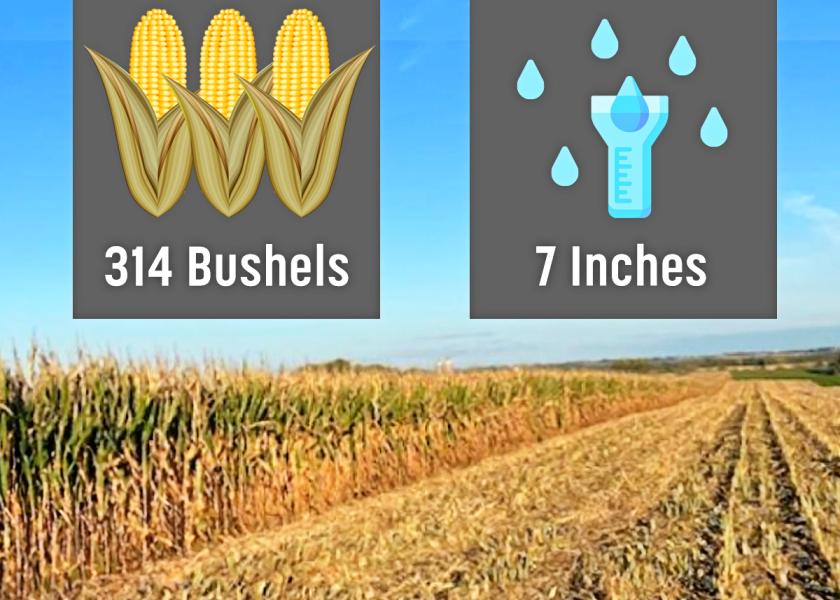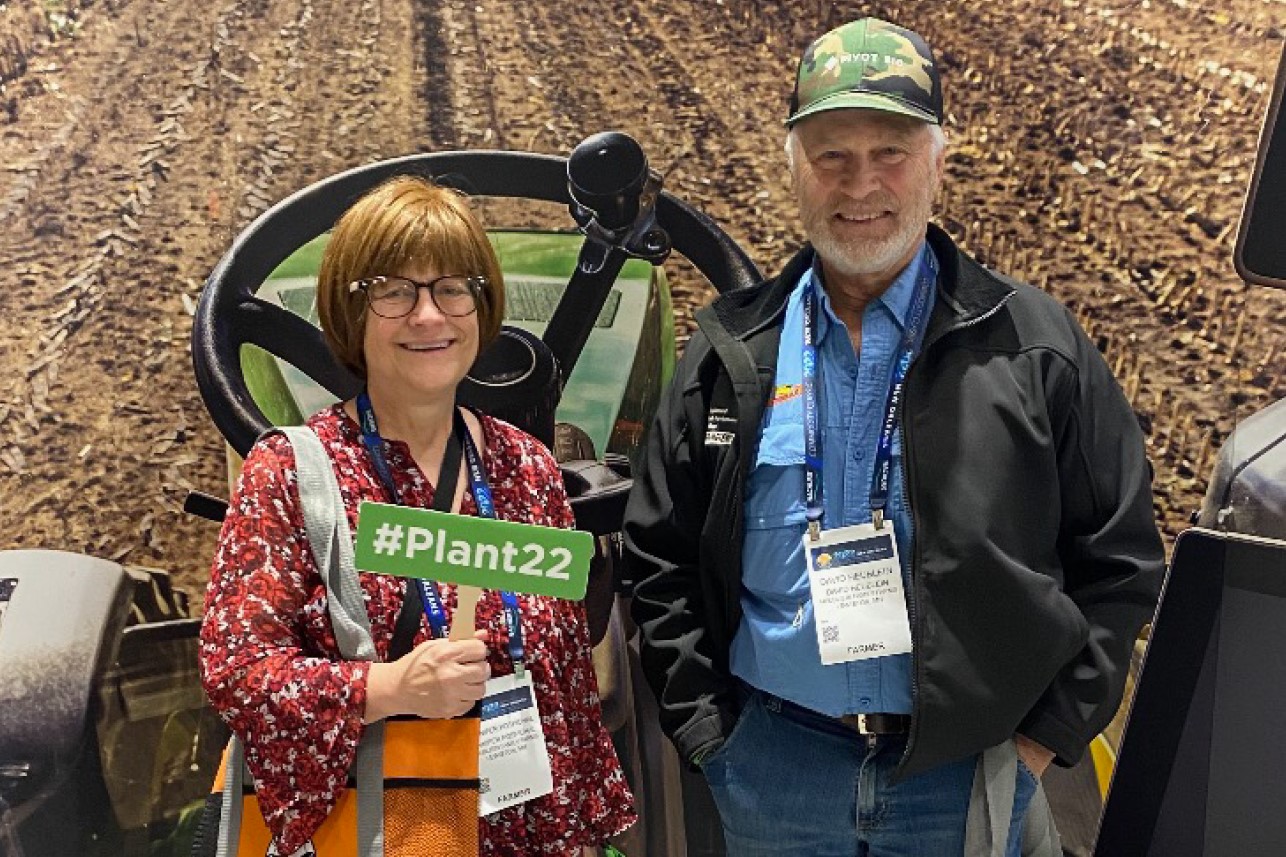314 Bu. Corn Yield Uses Only 7" of Rain to Score Big Win in Minnesota

David Heublein grew a contest-winning corn yield of 314.93 bushels in 2023 with only 7 inches of rain. If you wonder how that could be possible, you’re in good company. Heublein says he is still amazed by the experience.
“We thank the good Lord for providing just enough rain to give us this yield,” says Heublein, who won the conventional, non-irrigated category of the 2023 National Corn Growers Association (NCGA) yield contest for Minnesota. He farms in the southeast corner of the state with his wife, Jennifer.
Trait Technology Paid Off
The winning entry of DKC59-82RIB was planted in a 40-acre field at the couple’s home farm near Lewiston, in Winona County, on May 1 and was harvested October 11. On the day before harvest, the U.S. Drought Monitor showed 75% of the state’s corn crop, including Heublein’s, was enduring moderate (D1) to extreme (D2) drought.
 “I’m convinced these high-yielding hybrids with the new traits are a huge reason for our success,” says Heublein. “I’m also blessed to be surrounded with knowledgeable, caring individuals who help me make qualified decisions to better my bottom line.”
“I’m convinced these high-yielding hybrids with the new traits are a huge reason for our success,” says Heublein. “I’m also blessed to be surrounded with knowledgeable, caring individuals who help me make qualified decisions to better my bottom line.”
Heublein also credits his success to careful planting and harvesting practices, timely fertilizer and fungicide applications, the area’s nutrient-rich Port Byron and Mt. Carroll soils, moderate temperatures that climbed above 90 degrees only two times during the summer, and the precious inches of timely rainfall.
“We recorded 1.1” in May, 1.5” in June, 3.9” in July and just a half inch in August for a grand total of 7” for the season,” Heublein recalls. “That was about one-third of our normal rainfall. What these hybrids can go through with the weather we have today and still put on a good-sized ear with such kernel depth amazes me.”
Two other farms Heublein grows corn on didn’t fare well last season. The family’s farm based north of Fremont, Minn., received only 5” of total rainfall. The third farm, near Wilson, Minn., was hit with high wind and golf ball-sized hail on July 14. As a result, corn yields on both farms tanked.
Attention To Detail
During every growing season, Heublein says there are about 15 practices farmers have to get right to produce a high-yielding corn crop.
“Attention to detail is so important, because there’s no silver bullet,” he says. “Last year, so many things worked to our favor on the Lewiston farm.”
Heublein recalls he planted into ideal, “garden-like” soil conditions with excellent subsoil moisture. That made it easier for him to achieve a consistent planting depth of 1.75 inches.
“We benefit from good technology. DeltaForce on the planter helps us keep 100 pounds of down pressure on the opener all the time, so we maintain that planting depth,” he says. “I want that consistency because it helps us get uniform plant emergence, which is huge.”
Heublein says he also fertilizes fields to equip them to achieve high yields. “I’m a big believer in ESN time-release nitrogen. It’s got a polymer coating, so I think it stays available in the root zone longer than other fertilizers,” he says.
Timely weed control practices and in-season fungicide use also played a role in the contest-winning yield.
“On July 15 we hired a friend and neighbor’s son and his girlfriend to apply Delaro Complete fungicide. They used a drone with GPS guidance, and I think that helped them make a really accurate application that got down into the corn,” Heublein says. “They did a great job and put in a long day, which included lunch in my cow pasture. They left with a check in hand plus a tip for their work.”
Looking Ahead
Heublein says he anticipates he’ll enter the NCGA yield contest again in 2024. He and Jennifer have competed in the annual contest since 1991.
“I like seeing how our crop compares with other corn yields across the state and the nation,” Heublein says. “Getting over 300 bushels was a real accomplishment for us and an incredible experience. It’s really fun to see what these hybrids can do.”
A Snapshot of USDA's Surprising January Report in 10 Charts
3 Trends to Consider As You Make Risk-Management Decisions for the Year Ahead
Plants That Talk: Coming Soon To A Field Near You







